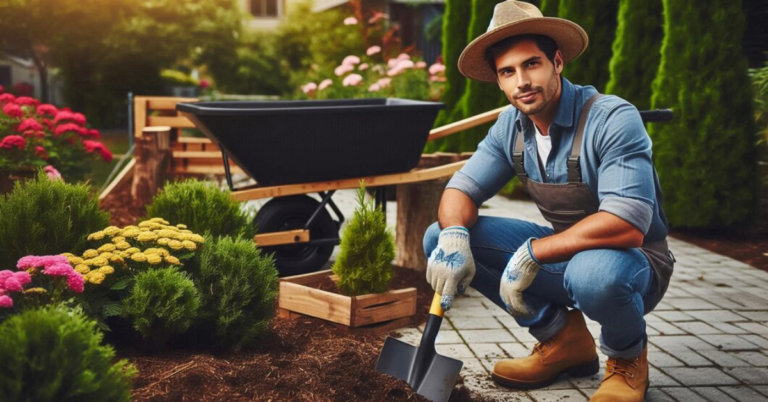Mold-Proof Your Home: Essential Tips to Keep Your Space Healthy
Mold growth can be a silent but dangerous intruder in your home, threatening both your health and your property. It thrives in damp, humid environments and can grow quickly if left unchecked. Mold not only damages your home but can also trigger a range of health issues such as allergies, asthma, and respiratory infections.
Fortunately, mold growth is preventable with some proactive measures. In this post, we’ll explore essential tips to mold-proof your home and ensure a safe, healthy living environment.
1. Control Humidity Levels
Mold flourishes in environments with high humidity. Keeping the humidity levels in your home between 30% and 50% will significantly reduce the risk of mold growth. You can use a hygrometer to measure indoor humidity, and if necessary, install dehumidifiers in areas prone to moisture, such as basements, bathrooms, and kitchens. Air conditioners can also help reduce indoor humidity levels, especially during hot and humid summer months.
2. Ensure Proper Ventilation
Good ventilation is key to preventing mold buildup. Make sure areas like bathrooms, kitchens, and laundry rooms, where moisture is generated, are well-ventilated. Install exhaust fans and open windows when possible to allow moist air to escape. Vent appliances that produce moisture, such as clothes dryers and stoves, to the outside. If your home has an attic, ensure it is properly ventilated to prevent condensation that could lead to mold growth.
3. Fix Leaks Immediately
Leaky pipes, faucets, and roofs are significant contributors to moisture, creating ideal conditions for mold growth. It’s essential to routinely inspect your plumbing for any leaks and address them promptly. Focus particularly on areas around sinks, tubs, and toilets, as well as in basements and crawl spaces where leaks can easily be overlooked.
Additionally, examine your roof for any missing or damaged shingles and make sure your gutters are clear of debris to prevent water from accumulating. For any plumbing concerns in Utah, consider reaching out to professional plumbing services to ensure your home remains mold-free.
4. Dry Wet Areas Quickly
Mold can start to grow within 24 to 48 hours on damp surfaces, so it’s crucial to dry wet areas as quickly as possible. If you experience a spill or flood, clean and dry the affected area immediately. Wipe up spills on floors, walls, or countertops, and dry off any wet clothing, towels, or carpets. For larger water damage incidents like flooding, consider professional help to thoroughly dry the area and prevent mold growth.
5. Use Mold-Resistant Materials
If you’re building a new home or renovating, consider using mold-resistant products. Mold-resistant drywall and paints are specifically designed to prevent mold growth. Mold-resistant drywall contains a paperless surface made of fiberglass, which makes it much less susceptible to mold than traditional drywall. Additionally, paints with mold inhibitors can help keep walls and ceilings protected, particularly in high-moisture areas like bathrooms and basements.
6. Clean and Maintain Your Home Regularly
Regular cleaning can help prevent mold growth by removing mold spores before they have a chance to settle. Use mold-killing cleaning products or natural alternatives like vinegar or hydrogen peroxide in areas prone to mold, such as bathrooms, kitchens, and basements. Regularly clean shower curtains, bathroom tiles, and window sills, where mold is likely to grow. Make sure to dust and vacuum frequently to reduce mold spores in your home.
7. Monitor Indoor Plants
While indoor plants are great for improving air quality, they can also be a breeding ground for mold if the soil remains damp for too long. To prevent mold from growing in plant soil, avoid overwatering your plants, and add a layer of dry soil or sand to the top. You can also move plants to areas with better airflow and direct sunlight to help reduce moisture in the soil.
8. Prevent Condensation
Condensation forms when warm air comes into contact with cool surfaces, creating moisture that can lead to mold growth. To prevent condensation, insulate cold surfaces like windows, walls, and pipes. Use double-paned or insulated windows to reduce condensation during colder months, and consider installing storm windows to create a barrier between warm indoor air and cold outdoor air.
9. Keep an Eye on Gutters and Downspouts
Clogged gutters and downspouts can cause water to overflow and seep into your home’s foundation or walls, leading to mold growth. Regularly clean your gutters and ensure that downspouts are directing water at least five feet away from the foundation. If necessary, extend your downspouts to prevent water from pooling near your home’s foundation.
10. Invest in a HEPA Filter
High-efficiency particulate air (HEPA) filters can trap mold spores and other airborne particles, preventing them from circulating throughout your home. Installing a HEPA filter in your HVAC system, air purifier, or vacuum cleaner can significantly reduce the number of mold spores in the air. Be sure to regularly clean and replace filters to maintain their effectiveness.
In Conclusion
Mold can cause serious health problems and damage your home if not addressed. However, by following these essential tips, you can prevent mold growth and create a healthier living environment for you and your family. By controlling moisture, fixing leaks, ensuring proper ventilation, and using mold-resistant materials, you can mold-proof your home and keep it safe and comfortable year-round. Proactive maintenance and regular cleaning are key to long-term mold prevention, ensuring your home remains a sanctuary free from harmful mold.







